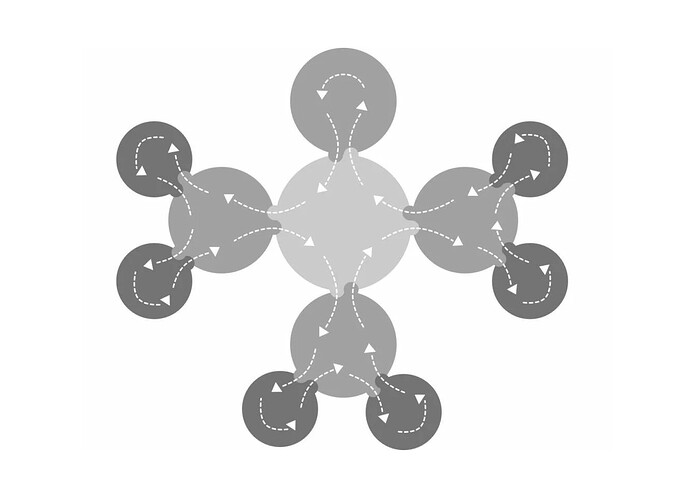In sociocracy, a circular hierarchy is a fundamental concept that shapes the organizational structure and decision-making processes. It is also known as a “circle organization” or “sociocratic circle structure.”
In a circular hierarchy, authority and decision-making power are distributed among different circles or teams within an organization. Each circle is responsible for a specific area or function and has the autonomy to make decisions related to its domain.
Here are some key aspects of a circular hierarchy in sociocracy:
- Circles:
Circles are self-organizing groups that operate within the organization. Each circle has a specific purpose, such as a department, project team, or working group. Circles are created based on the needs and functions of the organization. Each circle has specific domain aims and membership.
- Double-Linking:
Double-linking is a concept that connects circles within the sociocratic horizontal structure. The “links” are people that have full membership and decision-making rights in both the parent circle and the child circle. Such a double-linked circle structure allows for the flow of information, feedback, and balanced decision-making between circles. It also ensures that no circle has “power over” any other circle but “power with” other circles.
- Circle Meetings:
Circle meetings are an important part of the decision-making process in sociocracy. They provide a forum for members of a circle to discuss issues, make proposals, and consent to decisions. Circle meetings typically follow a structured format, such as rounds of discussion, consent decision-making, and evaluation of the meeting process.
- Consent Decision-Making:
Sociocracy emphasizes consent decision-making, where decisions are made based on whether they are deemed “good enough for now” and “safe enough to try.” Consent means that there are no reasoned objections from circle members, rather than requiring full consensus. This approach allows for efficient decision-making while ensuring that concerns and perspectives are taken into account and integrated through reshaping the initial proposal.
- Dynamic Governance:
Sociocracy promotes the concept of dynamic governance, which means that the organization’s structure and processes can evolve over time. Circles can be created, changed, or dissolved based on the organization’s needs and the consent of the people involved.
The circular hierarchy in sociocracy provides a balance between general domain / aims authority and specific (local) domains / aims (semi)autonomy.
It enables effective communication, collaboration, and adaptability within organizations, promoting a sense of ownership and engagement among members.
If you would like to share your comments or personal reflections on this topic, please feel free to do so in a comment below. Thank you.
Best wishes.
